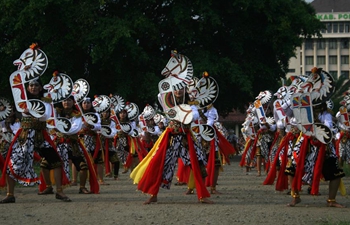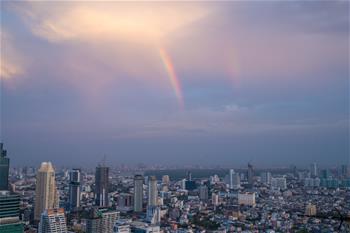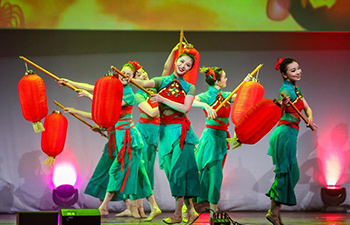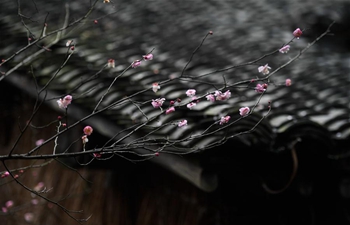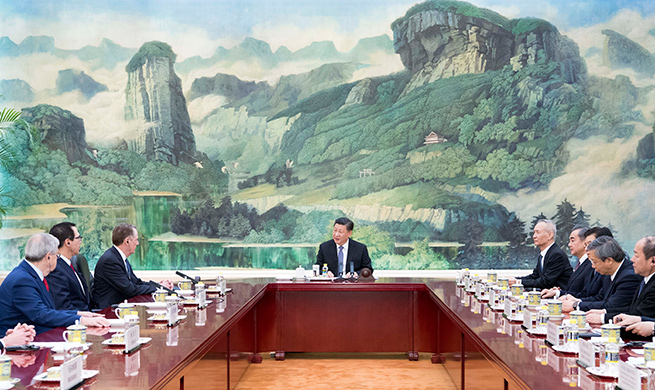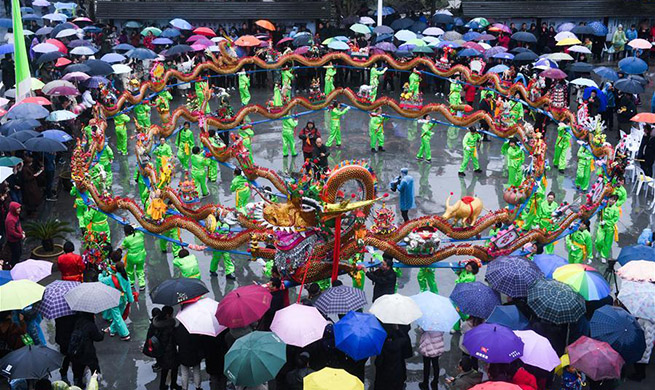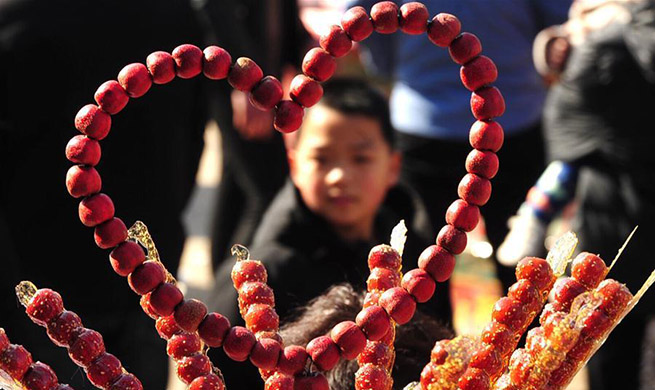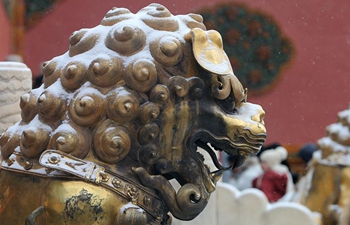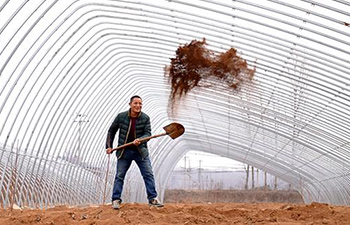BELGRADE, Feb. 17 (Xinhua) -- From the sounds and dances of the wild Horqin prairie of Inner Mongolia, over melodies of ancient instruments, to contemporary ballet of Guangdong -- Serbian audience will remember this year's Spring Festival gala for the unique opportunity to familiarize with the cultural diversity of China.
The ballet "Awakening", performed on Sunday evening in the capital of Serbia by the Guangdong Song and Dance Theater from China, was only the most recent in a series of well-received cultural events, staged in partnership between the two countries to mark the Chinese Spring Festival in Serbia.
The audience at Serbia's National Theater had a rare opportunity to enjoy a ballet which combines Chinese traditional performing art with elements of Tai Chi, telling a story about a young girl that struggles to overcome challenges and limitations of the pastoral environment in which she was born.
After watching the show, many visitors had words of praise for the elegance and precision of Chinese performers.
"Dancers dressed in black moved like one. I guess that they represent reflections of the inner world of the main protagonist. It seems very effective and I enjoyed the show," said Nikola, a spectator.
Milica Gojic, another spectator told Xinhua that she finds contemporary ballet much more expressive than the classical and that the "Chinese dancers brought the minimalist choreography to perfection".
"Their bodies are flexible and their movement appears so natural and elegant. It was a real delight to watch Guangdong (Song and Dance) Theater perform here in Serbia."
A day earlier, on Saturday, Hinggan Primitive Ensemble from the Horqin Prairie of China's Inner Mongolia held a concert at the Kombank Dvorana Concert Hall in Belgrade for an audience of several hundred people, including the Chinese Ambassador to Serbia Chen Bo.
The audience was moved by their melancholic songs about love, nature of the prairie, the upcoming spring, songs from family and everyday life such as the lullaby and drinking, as well as heroic ones about Genghis Khan or the famous wrestler Durenzhana.
"The music sounded as if a cavalry was storming through the hall, accompanied by delicate voices that convey stories about the worldview of Inner Mongolian people. I can see that China is rich in exotic folklore and that the instruments of this ensemble quite resemble Serbian traditional gusle (wooden fiddle)," said Dragana Bosic, a spectator.
Branko Ristanovic said: "I enjoyed the performance. I was able to feel the emotions in the songs without understanding one single word in them. Performances like this make us feel closer to distant countries like China, and also teach us about the way of life of people who still cherish their prairie, nature and traditions."
The festive atmosphere for the Year of the Pig was initiated on January 24 with a concert of masters on Chinese traditional instruments -- guzheng, pipa and erhu, while a Chinese Festival of Lights was opened here at the Kalemegdan Fortress on the evening of Feb. 4 local time, Chinese New Year's Eve, just one hour after Beijing welcomed the first day of the New Year.





